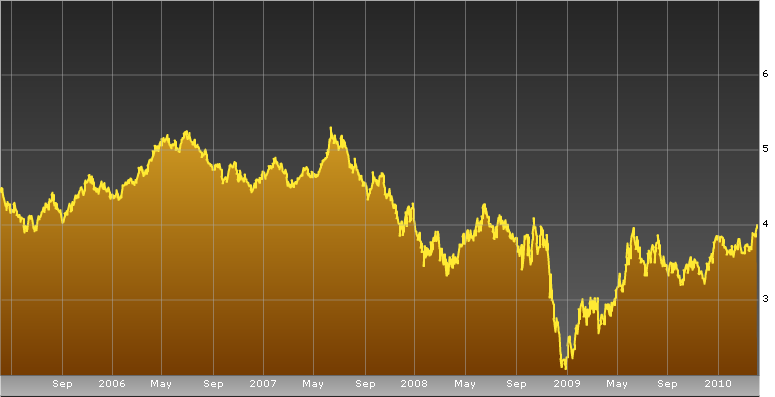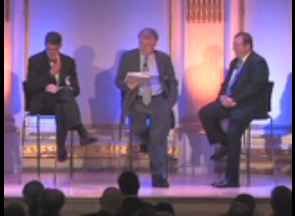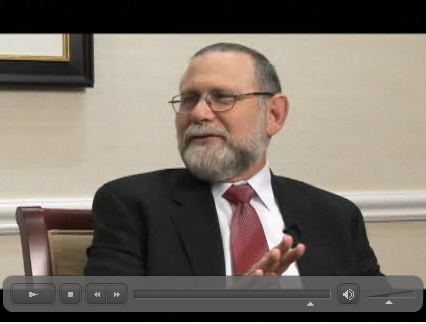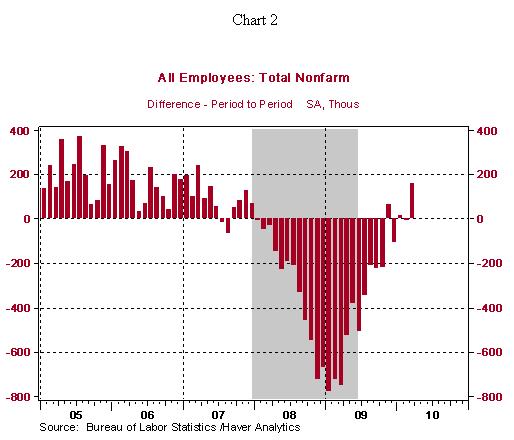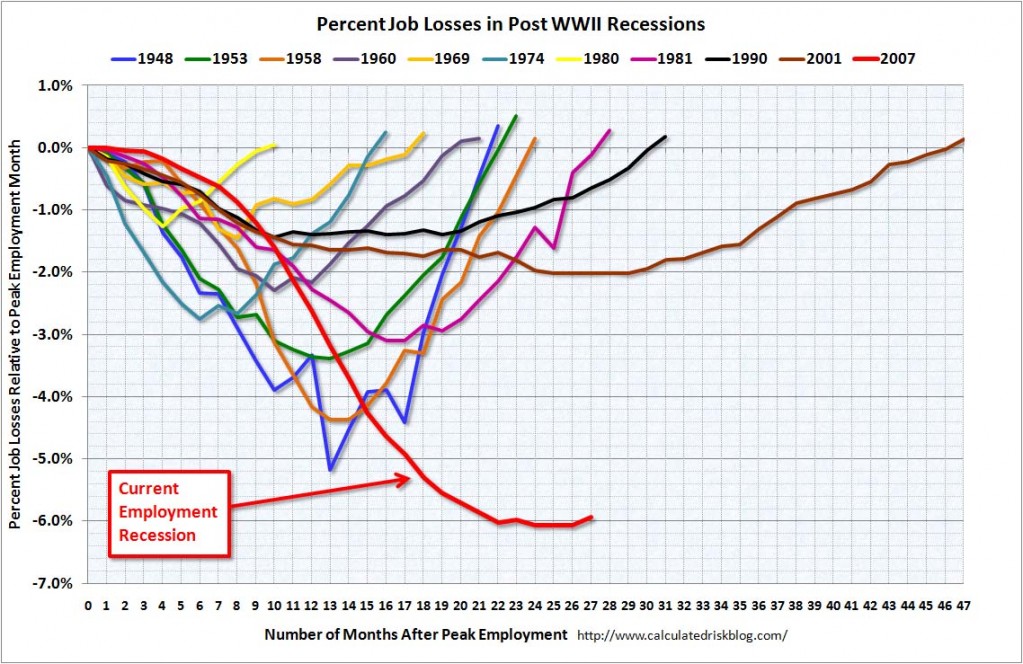Youth Unemployment
Daniel Henninger wrote on WSJ editorial page that the youth unemployment in the US is rising, now at 20%. He is worried about the US becoming another Europe, where welfare state creates a shortage of private-sector jobs.
Unemployment today doesn’t look like any unemployment in the recent American experience. We have the astonishing and dispiriting new reality that the “long-term jobless”—people out of work more than six months (27 weeks)—was about 44% of all people unemployed in February. A year ago that number was 24.6%.
This is not normal joblessness. As The Wall Street Journal reported in January, even when the recovery comes, some jobs will never return.
But the aspect of this mess I find more disturbing is the numbers around what economists call “youth unemployment.” The U.S. unemployment rate for workers under 25 years old is about 20%.
“Youth unemployment” isn’t just a descriptor used by the Bureau of Labor Statistics. It’s virtually an entire field of study in the economics profession. That’s because in Europe, “youth unemployment” has become part of
Now comes currency diplomacy
Tim Geithner postponed labelling China as currency manipulator, and he goes to China for back-door negotiations. It’s likely the appreciation will come not long after the visit.
Greek crisis is not over…
On Wednesday, the yield on Greece’s 10-year benchmark bond jumped to its highest level in a over a decade, Greek stocks fell, and the cost to insure Greek government bonds against default rose again. An International Monetary Fund team visited Greece, reflecting concern over a mammoth national debt—113% of annual output—that governments in Athens have spent years accumulating and sometimes masking.
Situation’s gotten worse today:
When Greece emerged from a European Union summit two weeks ago with the blueprint for a joint euro-zone and International Monetary Fund package tucked in its back pocket, many hoped the plan would stay exactly that: a plan. But soaring yields and fear of contagion to the banking sector have raised the chances Greece will have to call for concrete aid.
The presence of the aid package might have been expected to calm markets; but continued opacity over its workings and fears that political disagreement could prevent swift disbursement have left investors with more questions than answers. Greek 10-year bond yields hit 7.49% Thursday, a level not seen since 1998, sending the country back to pre-euro era borrowing costs. More worrisome, the real damage is at the short end of the curve and in the volatility of prices: Two-year Greek bond yields have risen more than two percentage points in just two days to 7.68%, a shocking 6.75 percentage points above German debt.
Adding to investor nerves, Greek bank deposits by domestic residents have declined sharply. As J.P. Morgan notes, though, it is difficult to know how to interpret this. It may perversely say more about the Greek government’s success in tightening fiscal policy, leading to worries about tax increases, than about lack of confidence in the banks, which have so far weathered the financial crisis well.
The result is that Greece may now have a case for proving that “market financing is insufficient”— the condition laid out by euro-zone leaders for providing support—as it seeks to raise €11 billion ($14.7 billion) to cover May’s refinancing needs. Finance Minister George Papaconstantinou says the country will keep on borrowing and seek to restore credibility. But plans to issue a dollar bond have gotten a cool reception by the market, and investors will be looking with trepidation at the performance of the new bonds sold by Greece this year: Last week’s seven-year issue has fallen six points already.
What might a rescue package look like? Greece might be able to borrow €15 to €20 billion from the IMF, with perhaps €20 to €25 billion coming from the euro zone, Barclays Capital estimates; this would certainly cover funding needs for the rest of the year. The IMF funding at least would be cheaper than market rate, at 1.25% for the first €3 billion and 3.25% for the rest; the euro zone might settle somewhere between 5% and 6% to reflect recent bond issue costs.
Tensions will remain high. Mr. Papaconstantinou is right to focus on continuing to implement Greece’s planned fiscal tightening. But the market now seems unwilling to give Greece the time it needs to repair its damaged credibility.
Also watch this video analysis from FT on whether the Greek debt crisis could be contagious.
What’s the right label for 2007-09 recession?
David Wessel discusses how to label the recent recession – In what sense, this was a GREAT Recession; and in what sense, it may not have been so different from other recessions, say the 1980-82 recession.
I think this recession ‘deserves’ to be called the Great Recession, or Great Develeraging, because of the following:
1. The first nationwide sharp housing price decline;
2. The Wall Street was totally reshaped: Bear Stearns, Lehman, Merrill and Wachovia were all gone, for example.
3. Worst labor market slump since the Great Depression in 1930s, and the employment will take long time to recover to the pre-crisis trend level;
4. Its contagion effect worldwide.
Federal Reserve Chairman Ben Bernanke calls it “the worst financial crisis in modern history.” His predecessor, Alan Greenspan, says it was “the most virulent global financial crisis ever.” The resulting recession was longer and deeper than any the U.S. has suffered since World War II.
But does it deserve the heavy mantle of “The Great Recession” that it seems to be acquiring? “Great” is a big word, a mark of enormous historical significance. World War I was the Great War until the second world war came along.
Herbert Hoover was an early adopter of “Great Depression,” using the phrase in 1931 because he thought it less alarming than “panic” or “crisis.” The Great Depression surely deserves the name. Industrial production fell 45% between 1929 and 1932. Unemployment went from 3% to 25%.
Economists often refer to the Great Inflation of the 1970s, the only time the U.S. saw sustained inflation above 5% in peacetime in the 20th century. For a time, they talked about the Great Moderation, the unusually calm economic seas that stretched from the mid-1980s to the early 2000s that some saw as a permanent change. Recent events suggest that it might be better described as the Great Mirage.
The recent recession began in December 2007 and probably ended in June or July 2009. (The end to recession isn’t the victorious end to a football game. The date marks only the moment where things stop getting worse.) It lasted about 18 months, longer than any post-war recession. Industrial production fell 16%, far more than any recession since the Depression. Payrolls fell 6%, unrivaled by recessions of the past half century. Unemployment went from 4.4% to 10.1%, an increase bigger than the five-percentage-point climb in the early 1980s—though the jobless rate didn’t hit the 10.8% peak hit in 1982.
“It’s pretty clear this is the most severe post-war recession,” says Mark Watson, a Princeton economist. But “greatness,” he adds, implies something more than “severe.”
…
and watch this recessions Yardstick
Treasury current is shifting, part 2
From WSJ (April 5, 2010):
The 10-year Treasury yield, the benchmark for U.S. consumer and corporate borrowing, rose to 4% for the first time since June.
The move extends a steady increase by Treasury yields, which move inversely to prices, lifted by a combination of stronger economic data and the barrage of debt issued by the government to meet its financing needs. Recent Treasury auctions have met with much weaker demand and Monday’s move comes ahead of more auctions this week, with the Treasury Department set to sell $82 billion of Treasury notes and bonds.The 10-year yield is a key benchmark for mortgage rates and other consumer and corporate lending.
My best take on the surge of 10-year rate is: this is due to more of investors’ early worry about US fiscal situation and rising long-term inflation expectation; rather than expectation of strong economic recovery.
Remember, the Fed can’t directly control long-term interest rate. IF the 10-y rate continues to rise as the result of rising inflation expectation, the Fed will be forced to raise short-term interest rate. This will put a brake on the tepid economic recovery, potentially causing a double-dip scenario, like the recession in 1981.
Now watch this great debate on the issue, between Jim Grant and Dave Rosenberg, on the topic whether “Treasury is for losers”…
Jim Grant holds the view that high inflation is ahead of us, and Rosenberg thinks deflation is a bigger risk, so treasury/bond securities are not bad bet.
(click to play, about 50 mins)
3 reasons why we’ll have another jobless recovery
Paul Kasriel, Chief economist of Northern Trust, explains in this interview piece why labor market will take very long time to recover. Very sensible analysis.
(click on the image to play)
The ‘blame China’ game
Interview of Stephen Roach on ‘don’t blame China for US problems’, and prospect on China’s currency reform.
Job market is improving, but still…
US labor market has started to add jobs at a pace not seen since 2007 (see chart below, graph courtesy of Northern Trust). This is positive.
Highlights of job losses/gains in March:
Construction: +15,000 vs. -59,000 in February
Manufacturing: +17,000 vs. +6,000 in February
Private sector service employment: +82,000 vs. +15,000 in February
Retail employment: +14,900 vs. +8,000 in February
Professional and business services: +11,000 vs. +40,000 in February
Temporary help: +40,200 vs. +36,700 in February
Financial activities: -21,000 vs. -15,000 in February
Health care employment: +26,800 vs. +14,100 in February
But still (pretty much) this will be a jobless recovery (see the scary chart below), following the last two recessions (1990-91, and 2001).
(click to enlarge; graph courtesy of calculatedrisk)
Tough road ahead…


![[TRADE_p1]](https://sg.wsj.net/public/resources/images/P1-AU640_TRADE__NS_20100407182817.gif)
![Reblog this post [with Zemanta]](https://img.zemanta.com/reblog_e.png?x-id=37a9de28-17ae-43eb-8530-55fd86792aac)
